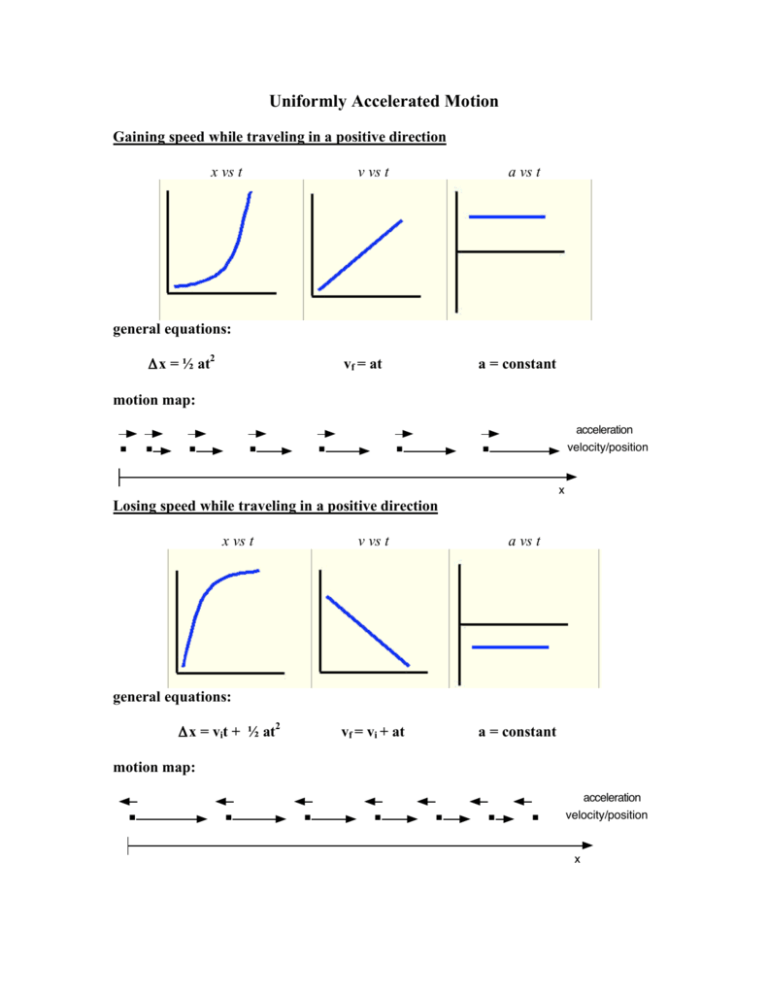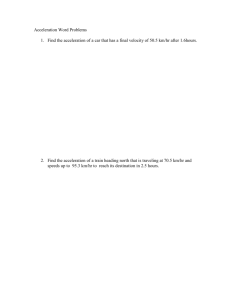Uniformly Accelerated Motion
advertisement

Uniformly Accelerated Motion Gaining speed while traveling in a positive direction x vs t v vs t a vs t general equations: Δx = ½ at2 vf = at a = constant motion map: . . . . . . acceleration . velocity/position x Losing speed while traveling in a positive direction x vs t v vs t a vs t general equations: Δx = vit + ½ at2 vf = vi + at a = constant motion map: . . . . . . . acceleration velocity/position x Gaining speed while traveling in a negative direction x vs t v vs t a vs t general equations: Δx = ½ at2 vf = at a = constant motion map: . . . . . . . acceleration velocity/position x Losing speed while traveling in a negative direction x vs t v vs t a vs t general equations: Δx = vit + ½ at2 vf = vi + at a = constant motion map: . . . . . . . acceleration velocity/position x The Slopes of Motion Graphs A considerable amount of information about the motion can be obtained by examining the slope of the various motion graphs. The slope of the graph of position as a function of time is equal to the velocity at that time, and the slope of the graph of velocity as a function of time is equal to the acceleration. In this example where the initial position and velocity were zero, the height of the position curve is a measure of the area under the velocity curve. The height of the position curve will increase so long as the velocity is constant. As the velocity becomes negative, the position curve drops as the net positive area under the velocity curve decreases. Likewise the height of the velocity curve is a measure of the area under the acceleration curve. The fact that the final velocity is zero is an indication that the positive and negative contributions were equal.






